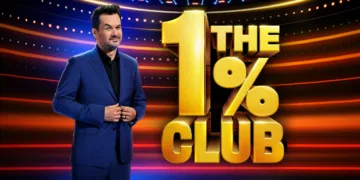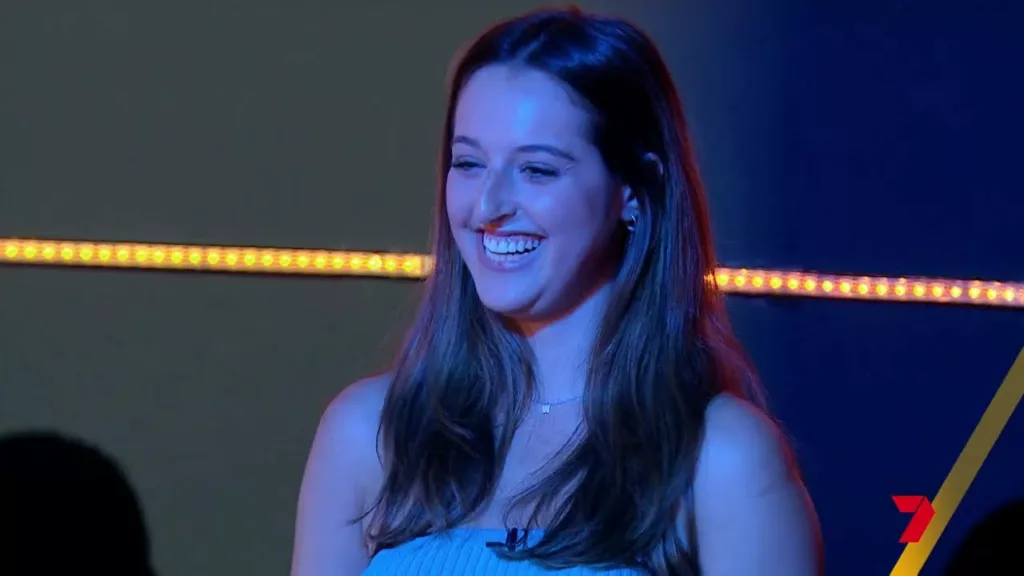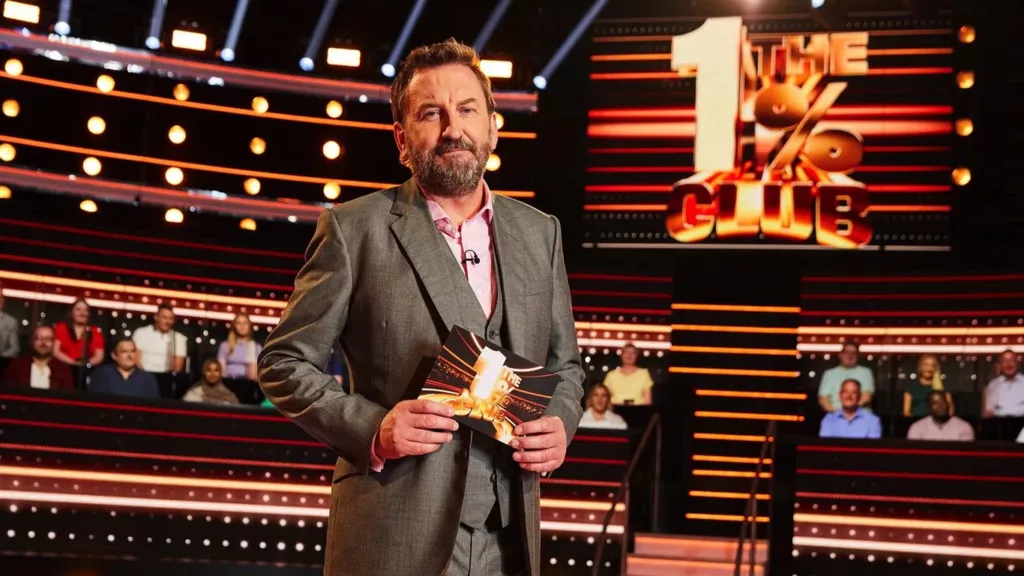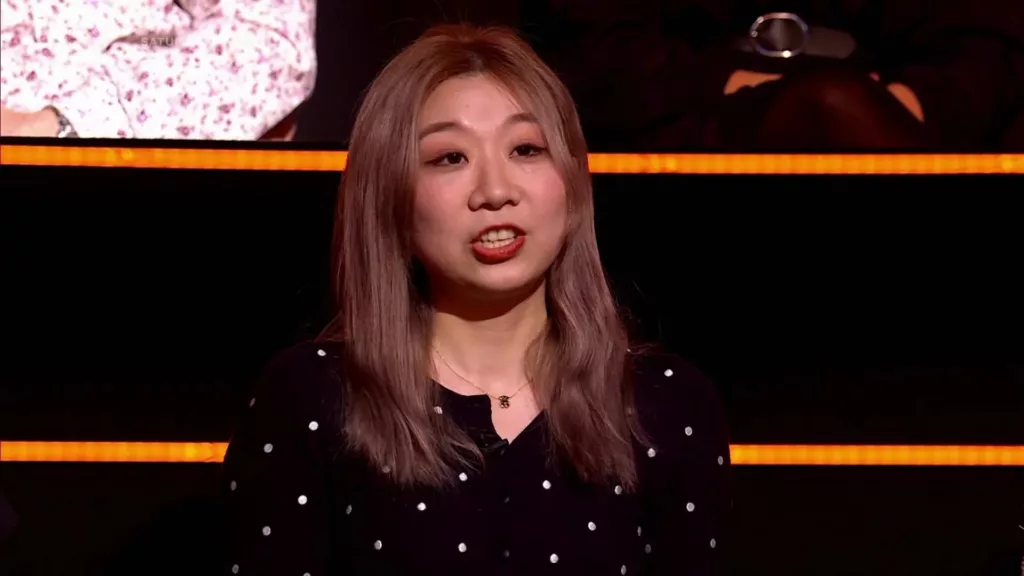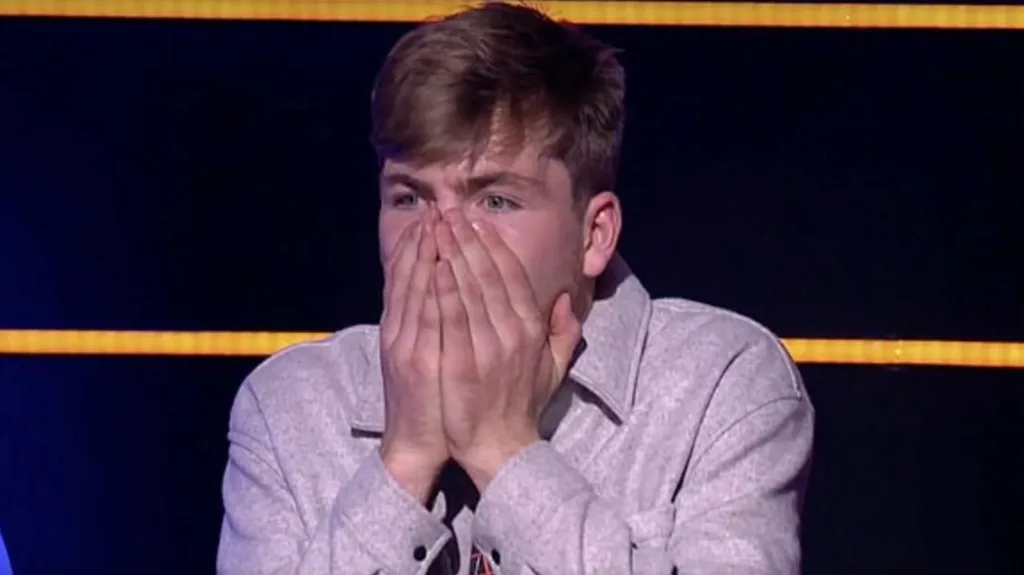One hundred contestants enter the game, but only one can be the champion. Host Patton Oswalt welcomes the diverse group to test their wits by answering a series of questions that start out easy enough yet steadily rise in difficulty. Can they solve riddles, find patterns, and use logic to survive as others fall by the wayside?
The contestants seem like a typical mix—people from all walks of life hoping this could be their lucky chance. Each holds $1,000 to begin, relying on brainpower alone to keep it. Oswalt promises questions even the village genius may miss, playing on our universal desire to boast, “I know this one!”
The rules are straightforward: get it right, stay in the game. Get it wrong, and your bankroll joins the prize pool for the winner. As rounds pass, options expand, like taking the money and running or trading bucks for a “bye” to the next puzzler. Who will endure the final challenge where one question separates success from failure and a six-figure reward could be their reward?
Tension builds as the herd thins. Friends cheer each other on, but they know only one can be the champion. Oswalt keeps spirits light between brain-benders with his wry wit. As sunset nears, just two survivors remain—who will join the elite 1% with an answer in hand? Now the real contest begins!
Questions of Logic
One hundred hopefuls enter the game, but only the top thinker can leave as champion. Each contestant holds $1000, relying on wits rather than luck to outlast the others. Host Patton Oswalt keeps the mood light as the puzzle-solving begins with easy-peasy pop inquiries even your grandma could answer.
Nobody stays eliminated for long, though, as wrong responses send dollars to the jackpot. As rounds pass, options expand with extra “lives” or the chance to quit while your dollars are still green. Passes and money-outs add intrigue, letting strategic types gamble on their abilities.
Round by round, question by question, difficulties ramp up. Puzzlers progress from random facts known by nine in ten to true tests that stump ninety-nine. Pondering gets tougher as contestants dwindle, with clues hidden deeper in each enigma. Patterns emerge yet remain enigmas to those without skill in logic’s subtle art.
Tension mounts as the final face-off nears, with superior smarts the only way to break free. Gaining this game means proving your mettle among questions answered correctly by only one in a hundred. Here, mastery of deductive reasoning and out-of-the-box thinking determine success or failure, and a six-figure reward awaits the sole survivor.
Through challenges for all levels of learning and lessons in perseverance, this show celebrates intelligence as entertainment for education-seekers of all stripes.
Testing the Best
This 1% Club entry packed more puzzlement than most. The first question seemed straightforward enough: which animal pictogram didn’t fit? but soon tricksters arrived. One brainbuster had folks scrambling over nonsensical strings of letters, hunting hidden meaning. Another was teased with nesting shapes, searching out patterns within patterns.
As rounds advanced, perplexers grew dense. Contestants concentration showed on their painted faces while that timer ticked. Wrong picks meant walking the plank, yet some survived on pass cards played at peaks of perplexity. With each wrong answer, the reward fund grew fatter, raising stakes for final faceoffs.
Among the survivors, a scientist shone. Quickly solving with steady logic, she outsmarted challenges that stumped others. A retired teacher also taught the tests a lesson, with wise eyes scanning for clues most missed. But neither proved unbeatable. A young engineer emerged as a dark horse, improvising ingenious interpretations outside the box.
Finally, only these three stood the test. Tension mounted as wits were put to the ultimate inquiry, which was answered correctly by a mere one percent. In a thrilling finish, the engineer earned bragging rights by deciphering its puzzle where others failed. With victory came the bounty—a small fortune to fund future feats of brainpower, proof that the best problem-solvers can rise from any walk.
Patton Puts Contestants at Ease
As host of The 1% Club Patton Oswalt works to set a relaxed tone. His opening to contestants, “Ever wonder who’s the smartest in the room?” breaks the ice with humor. Throughout, Oswalt skillfully balances questions with quips that keep tensions light. When a puzzler proves perplexing, he alleviates stress with a well-timed joke.
With 100 minds vying, an air of competitiveness arises. Yet Oswalt ensures no hard feelings, easing the banter between brainiacs. He chats each contender up too, unearthing interests that add character. Though focused, their zeal remains friendly, with more excitement than anxiety driving answers.
Elimination proves inevitable as rounds render results. But where some show ramp tension to fever pitch at each send-off, Oswalt smoothly steers back focus to the fun. He bids them all farewell with an affable message stressing their smarts, not their score, framing failure as a learning experience. So contestants embrace hugs, not hangdog looks, departing graciously as they came.
Throughout, Patton prevents pressure from popping passions. His presence promotes positivity over pressure-cooker peril, ensuring even early exits feel energized, not dejected. Win or lose, all leave laughing and looking to learn more—a testament to Oswalt’s talent for keeping curiosity, not cutthroat competition, the clear contest here.
Puzzle Power on The 1% Club
This show got me asking: What kind of puzzles can trip up even smart folks? It turns out that The 1% Club keeps you guessing with everyday logic questions, not just trivia.
The puzzles start simple enough—things most anyone could reason out. But subtly, the difficulty ramps up. One moment a riddle relies on pattern-spotting; the next, it’s twisting words to fool contestants. Believe me, more than a few stumpers had me scratching my head!
As the rounds pass, the need to think on your feet intensifies. Where the early puzzles welcome time to mull over clues, later question speeds mean seconds count. A tricky wording or sneaky solution can now send anyone home empty-handed. The tension grows as contestants thin, with only the sharpest surviving to face the final exam.
What’s clever is how deceptively basic some brainteasers become in hindsight. Yet under pressure, even simple things seem sinister! You feel invested in our puzzlers, rooting for logic to prevail against trick questions. The challenge keeps you invested in whoever perseveres to that climactic conclusion, decided by a problem on a whole other level.
So if you enjoy a good mental maze or love a puzzle with purpose, The 1% Club delivers the questions. Its everyday conundrums are anything but easy, crafting a test with as much wit as wisdom.
Puzzle Pleasure for All Ages
Families looking for fun get more than bargains with The 1% Club. See, this show prides itself on puzzles requiring wit over a wealth of trivial facts. riddles that delight kids while motivating creative thinking.
Young minds find solace in solving conundrums by tapping logic, not lived experiences. Patterns glimpsed through play foster skills for meeting story problems head-on. Clever clues stir curiosity, fueling further fascination with how mysteries unravel.
Such innocent intrigue sparked my notion: why not tailor tough teasers to test youth logic? A spin-off inviting kids’ quirky answers introduces puzzle passion early. Their fresh perspectives uncover creative solutions that are often overlooked. Together, generations strengthen bonds by exploring multifaceted mysteries.
Admittedly, not all riddles relax grown minds prone to preoccupation. Time restrictions threaten normally nimble neurons overanalyzing minutiae. Yet simplicity shines through stress, as fundamentals fit families of all compositions. Joyfulness emerges not from perfection but from participation itself.
So relax, switch off scrutiny, and simply savor surprise! Together, young and old discover delight hiding in plain sight, as riddles reward receptive reasoning over rote recollections. In sharing stumped smiles and solved satisfaction, connections strengthen and understanding grows.
A Puzzling Success
By the way, that 1% Club surely keeps you on your toes! Now I know what you’re thinking—it sounds like a task for professors, not regular folks. But hear me out on why this show deserves an audience of all sorts.
It starts simple enough, with Patton Oswalt charming as ever. But those early questions don’t stay easy for long. Soon patterns must be puzzled out, all while that clock is ticking. Miss a solution, and off you go, cash added to the prize fund. High stakes make the heart race, even from my sofa!
Yet intriguingly, answers come less from stored facts than from creative thinking. It rewards those relaxing into each tricky tease, not overanalyzing. And while some stump me but are good, the joy’s in playing along. Immersing in each mind-bending mystery momentarily lifts stressful thoughts.
What’s more, I’ve little doubt clever adaptations can catch any interest. Imagine colorful cartoons or stories bringing families that much fun. Maybe high school quiz bowls are finding new fervor too! With creativity, these brainteasers may open fresh eyes to puzzles young and old adore.
In short, whether taxing terrabytes or tickling fancy, this show stimulates in the best ways. So I say, keep those riddles coming—our brains could use more exercise! With wit like Oswalt’s at the helm, The 1% Club’s secured my viewership for episodes to come. Its puzzles may not vanquish, but they entertain, and that’s enough for me.
The Review
The 1% Club
The 1% Club offers an engaging mental challenge for puzzle lovers that makes for enjoyable family viewing. While not flawless, the show stimulates creative thinking with its uniquely logic-based questions. At its best when embracing whimsy over high-pressure stakes, Patton Oswalt's genial hosting and the interactive element of playing along help make the brainteasers feel more like a party game than a serious test. With room yet for refinement, this different kind of quiz show maintains entertainment value worthy of its audience's time.
PROS
- Engaging logic- or problem-solving-based questions stimulate creative thinking.
- Interactive elements engage viewers to play along at home.
- Patton Oswalt's likable hosting style and comedic flair
- A welcome change of pace from standard trivia-based quiz shows
- Potential to entertain new audiences through adaptations
CONS
- A higher difficulty level may challenge or frustrate some viewers.
- Lack of personal narratives lessens emotional investment
- Stronger time pressures induce stress rather than fun.
- Format still feels it could loosen up for full comedic potential.
